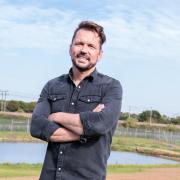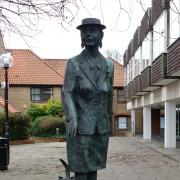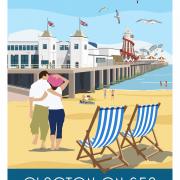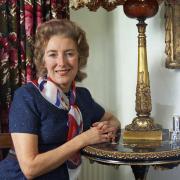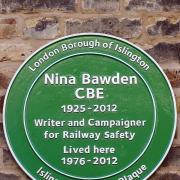In her latest edition examining unusual facts about Essex Mica Bale looks at the Pilgrim Fathers’ visit to Billericay, the UK’s only chariot racing track, the Battle of Assandun and more
1) Did you know that the most successful Cheltenham Gold Cup winner, Golden Miller, was buried in Elsenham?
With an impressive career in horse racing that saw him claim the Gold Cup a total of five times, Golden Miller also won the Grand National and Cheltenham Gold Cup in the same year, the only horse to do so.
2) With a fascinating history that can trace its origins back at least 1,000 years, Bourne Mill is certainly one of the most interesting structures in Essex, providing a rare insight into the county's roots from a millennium ago.
Today, Bourne Mill is under the care of the National Trust and there is much to enjoy, including the surrounding grounds in which a great variety of herbs thrive and have done historically for generations.
3) It is thought that the Pilgrim Fathers made a special visit to Essex before setting sail to distant lands. Billericay is said to be the location of one of their meetings and although this is unproven, evidence would suggest that the story is accurate.
Several people from Billericay would board the Mayflower and names from the area of Billericay as well as from other parts of the county would later appear in their new home in America.
4) Did you know that Essex is home to what is thought to be the UK's only known Roman chariot racing track?
The exciting historical and archaeologically important site is situated in Colchester and is impressive, not just for its insight into Roman entertainment, but also as it is the only one that is known to survive and be uncovered. Today, the Roman chariot racing track continues to entertain and is open for the public to learn from and enjoy.
5) Were you aware that Oliver Cromwell sent his sons to school in Essex? Felsted School welcomed its high profile pupils and became the only public school to have tutored a head of state when Richard Cromwell received an education there.
Richard Cromwell was the third son of Oliver Cromwell and he, along with his brothers, were ideally situated at the Essex school, not least of all due to its proximity to their mother's home.
6) Interestingly, the historic Dane, King Canute, took control of Britain after defeating King Edmund Ironside in Essex at the Battle of Assandun in the October of 1016.
Although there is some dispute as to where exactly in Essex the victory was claimed by Canute, many believe that the location of the fateful battle was at Ashingdon, although others hold that Ashdon was the site. In either case, Essex was certainly the location of one of the most significant battles of the 11th century.
7) From invading armies to acclaimed figures, Essex has boasted many a famous visitor as well as many local sons and daughters born and bred in the county. One of the county's most fascinating residents was Anne Lindsay, whose career as both actor and translator in the early 20th century was as varied as it was interesting.
Completing a degree in French she went on to work at Harrods, while also taking the role of Robin Hood, and would later lead an active life before successfully translating Emile Zola's novel The Earth and settling in Essex at Castle Hedingham.
8) Did you know that the Icknield Way Path is said to be the very oldest road in Britain?
The walk is a long distance path in the East Anglian region including sections of the way threading through Essex, stretching more than 100 miles and offering some of the finest views of the area, as well as some of the most historic, dating back to ancient times.
9) The Essex Beekeepers' Association dates back to 1880.
With 1,000 members, the association works hard to care for the many hives and bees under their care while also meeting together to further projects, share expertise and welcome new and young beekeepers, and make honey of course.
10) Wivenhoe Park welcomed John Constable on several occasions in the early years of the 19th century.
During Constable's stays he produced several works, including the famous Wivenhoe Park. This commission meant much to the painter as the fee allowed him to marry his sweetheart, Maria Bicknell.




